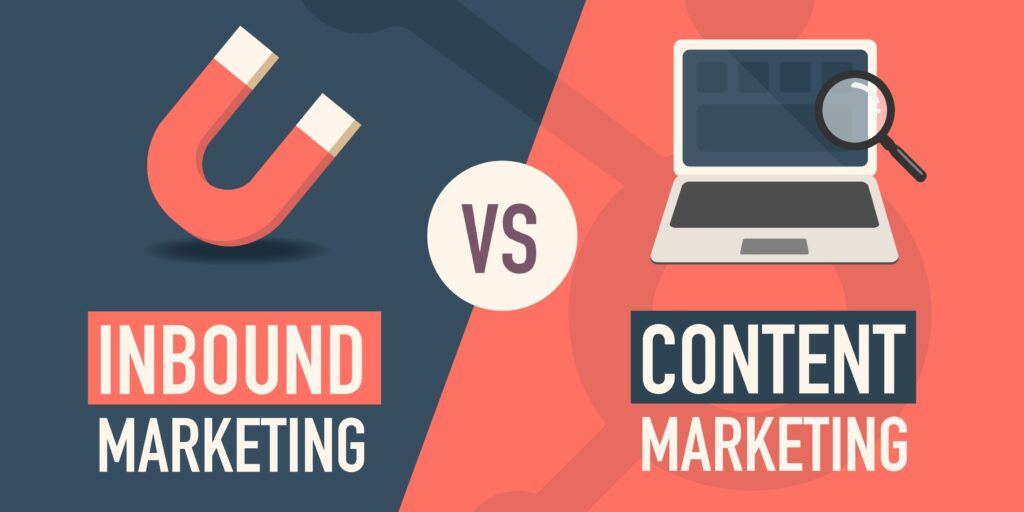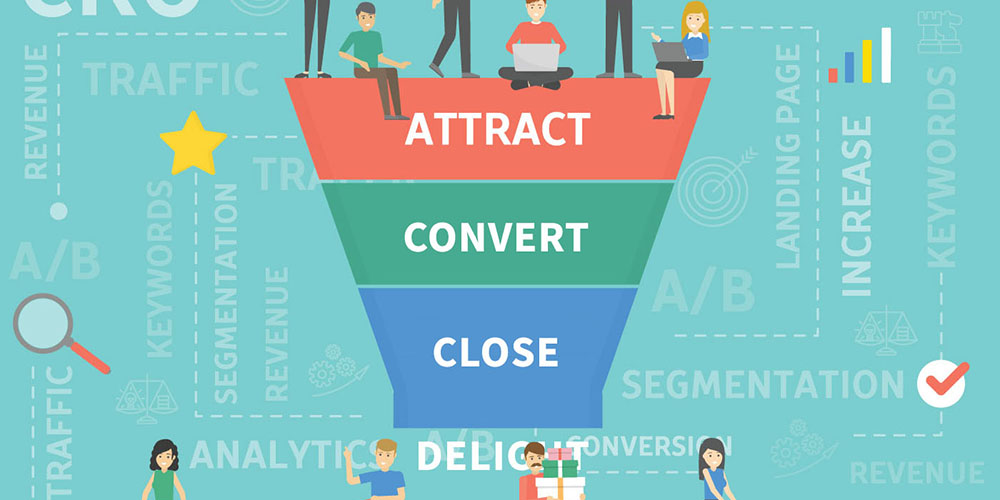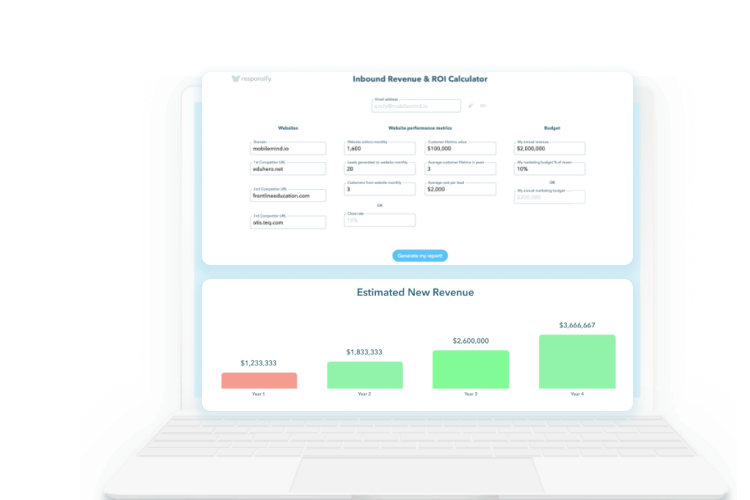 1,429 views
1,429 views 4024 Views
4024 Views  6 min read
6 min readIn short…
While many mistakenly equate inbound and content marketing, these strategies have distinct characteristics. Both involve creating valuable content to promote your products or services but differ in their approach and focus. As marketing leaders, you’re well-versed in the customer-centric nature of inbound marketing. It’s not about bombarding potential customers with ads or promotions (outbound marketing). Instead, it’s about understanding their needs, pain points, and interests and creating valuable, relevant, and educational content that addresses these directly.
The core idea of inbound content marketing is to create content that aligns with what your target audience is already searching for. This approach, focused on building trust and engagement over time, offers significant long-term benefits. We will dig into the key components of inbound content marketing and why you should prioritize it. 
The Inbound content marketing strategy involves using:
The Inbound marketing strategy takes it a step further by using strategies from content marketing plus:
Responsify offers its customers its Inbound content marketing services to aid your business in becoming more visible in the life of your target audience. You will see how offering your potential customers help, even though they don’t want to make a purchase right now, will fuel your marketing and sales with qualified leads to increase sales in the future.
The idea of inbound content marketing is to be present along your buyer’s journey so your company will be the first place they go when they need your products or services. The key to success is creating the right content at the right time to steer strangers toward becoming promoters of your brand.  Let’s review the four stages of the inbound content marketing strategy and examples of each.
Let’s review the four stages of the inbound content marketing strategy and examples of each.
Before you can begin to attract prospects, you have to determine the specific buyer persona you want to reach. Your inbound marketing strategy will be more efficient as you understand your potential customer’s main interests, questions, challenges, and objections. Some of the most effective ways to attract your buyer persona are:
Those strangers that you’ve drawn to your company now have the potential to become future customers. But to achieve this, you have to get their contact information. Unfortunately, this task won’t be easy as identity theft and fraud become more common. The key to converting visitors into leads involves providing value to your buyer persona so they willingly give you their contact details. Some of the most effective tools for exchanging information include:
No one enjoys those pesky emails that offer you every product imaginable. To ensure these new leads become customers, you have to use the right strategy combined with essential tools to focus on the customer’s needs. Some of these tools include:
The key to increasing ROI isn’t accomplished just by creating new customers. The success of your business depends on continuing to find new customers and providing valuable, relevant content to existing customers. Show your current customers how much their opinion matters with these practical tools:
Clearly, inbound marketing is more than just about blogs. It requires the effective use of multiple marketing and sales tools to attract strangers that fit your buyer persona. The reality is that one of the best ways to accomplish this is through blog posts. What makes them an effective tool? Anyone can write tons of information about random topics, but the right blog provides every potential customer with information they can use immediately. Of course, the topics must coincide with your product or service while still giving your customers something they need. But the best inbound marketing strategy combines effective and valuable blog posts with:
The goal is to provide interactive opportunities that attract different types of people from your target audience. Do you want to learn the differences between Inbound Marketing and Content Marketing?
The video explains each type of marketing strategy and how they can be useful for your business, as well as what is Content Marketing and examples of its benefits. Marketing Explained, ‘Which should you chose? Inbound vs Content Marketing,’ via YouTube
Inbound content marketing is becoming a vital part of the function of every business. As we shift to increased use of the internet, great content will contribute to the many benefits inbound marketing yields, including:
We’ve discussed the various aspects of successful inbound content marketing strategies. The focus is on promoting your business with great content through blogs, search engine optimization, social media, and more. On the other hand, outbound marketing is referred to as interruption marketing. Traditional methods in this type of marketing include:
Although outbound marketing has been successful, inbound content marketing has adapted to this technology-driven world by understanding the buyer’s journey.
1. Approach Outbound: Involves actively pushing a message out to a broad audience, often interrupting their daily activities with ads, cold calls, and more. It’s a more traditional, direct approach.
Inbound: Puts the customer at the center, focusing on attracting potential customers by creating valuable content that draws them in naturally, aligning with what they are already searching for online. It’s less intrusive and more customer-centric, showing that their needs and interests are the priority.
2. Audience Targeting Outbound: Usually casts a wider net with a broad, often less-targeted audience. For example, billboard ads are seen by many, but not everyone who sees them is part of the target demographic.
Inbound: More targeted, as content is tailored to specific buyer personas or customer needs. For instance, a software company might create content specifically for ‘IT Managers’ or ‘Small Business Owners’, addressing their unique challenges and interests. People find the content when seeking solutions or information, making them more qualified leads.
3. Cost Outbound: Often more expensive. Google ads or print media require significant costs. The return on investment (ROI) may not always be as precise or predictable.
Inbound: Generally more cost-effective. While creating quality content takes time and effort, the distribution cost (e.g., via blogs and social media) is usually lower, and content can continue to generate value over time.
4. Longevity Outbound: Results are typically short-term. Once an ad campaign ends, so does its impact. There is no lasting benefit from the effort.
Inbound: Offers a long-term strategy. Content has a long shelf life. Blog posts, videos, or white papers can continue attracting visitors and generating leads long after publication.
5. Customer Experience Outbound: This can feel intrusive, often interrupting people’s day-to-day activities. It’s a less personal, more one-way communication style.
Inbound: Provides a more organic experience. Potential customers find content when seeking information, leading to a better experience. They come to the brand on their terms, which fosters trust and engagement, making them feel comfortable and at ease.
Refine and optimize your inbound marketing strategy to succeed. Unfortunately, understanding how it works may be an obstacle to reaping the benefits of this strategy and creating loyal customers. Responsify is here to help your business by providing expert, customer-centered services that will increase its traction and make a more significant impact. So contact us today, and let’s talk about your marketing challenges and goals.
Also Read – Inbound Marketing Tools to Effectively Generate Leads and Best Ways to Develop an Effective Content Inbound Marketing Strategy
Inbound content marketing attracts and engages customers by providing valuable, informative content. Instead of pushing ads, it focuses on blogging, SEO, email marketing, and social media engagement to nurture leads.
Inbound content guides potential customers through the sales funnel, from awareness to decision-making. Lead magnets, gated content, and personalized email marketing are key strategies.
